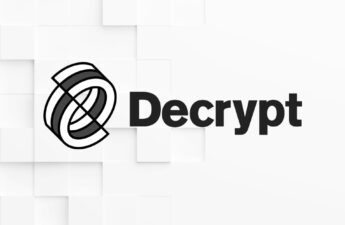On January 3, 2009, the anonymous creator of bitcoin, Satoshi Nakamoto, launched the Genesis Block – the first block in the Bitcoin Blockchain. The event at the time wasn’t celebrated – it was arguably considered a blip in the long history of cryptography and digital currency – but today we know the Genesis Block was one of the most important things to happen in the history of cryptocurrency.
Let’s talk about what the Genesis Block was and why it was important – even vital – to the growth of cryptocurrency.
What is a genesis block?
A blockchain ledger can be thought of as a digital chain of boxes, where each box contains a set amount of data. Part of that data includes a reference to the previous block, which, in turn, contains information about the block before it and so on. This data can be followed all the way back to a blockchain’s very first block — known as the genesis block.
A genesis block lays the foundation for a new blockchain and possesses a number of unique traits that no other block in its chain has.
With regards to bitcoin’s genesis block, its creation marked the beginning of a new financial revolution and ushered in the era of decentralized digital money.
What’s special about a genesis block?
When a new blockchain is created, it’s important that all network participants — known as nodes — acknowledge the same block as being the genesis block and synchronize from the same point. To ensure this, genesis blocks are directly embedded into their respective protocol’s source code. No other block is permanently recorded in this way.
Genesis blocks are also the only blocks that do not reference a previous block of transactions. For all other blocks, they contain a hash value of the previous block. In the case of genesis blocks, this value is always zero.
Crypto tokens such as Tether, Chainlink and Uniswap do not have genesis blocks. This is because, unlike crypto coins, crypto tokens are built on top of a non-native blockchain like Ethereum, Solana or Binance Smart Chain.
The bitcoin genesis block
The bitcoin genesis block is famous for a number of reasons.
First and foremost, it’s hailed as being the first cryptocurrency block ever created on a globally viable, proof-of-work powered blockchain. This landmark moment paved the way for the creation of the disruptive digital asset industry we have today.
That being said though, just like its mysterious creator(s), bitcoin’s early beginnings are also deeply shrouded in mystery.
In the original Bitcoin source code distributed in 2008, Bitcoin’s creator(s) Satoshi Nakamoto referenced the hash of the bitcoin genesis block as being,
“0x000000000019d6689c085ae165831e934ff763ae46a2a6c172b3f1b60a8ce26f”
Cryptographer Ray Dillinger, a.k.a Cryddit, was one of the first to receive the original Bitcoin source code. They noted the genesis block hash in the early source code was different to the bitcoin genesis block hash produced when Nakamoto launched the protocol on Jan. 3, 2009 —several months later.
The subsequent bitcoin genesis block hash turned out to be:
000000000019d6689c085ae165831e934ff763ae46a2a6c172b3f1b60a8ce26f
The two values are almost identical, apart from the second character. Some have suggested this might point to an earlier bitcoin blockchain that Nakamoto may have created for “testing purposes” but never continued. However, like Nakamoto’s true identity, the existence of this potentially earlier bitcoin blockchain remains unclear.
How much BTC was minted in the bitcoin genesis block?
When Satoshi Nakamoto mined the official bitcoin genesis block in 2009, 50 BTC were created for the first time and sent to the wallet address: 1A1zP1eP5QGefi2DMPTfTL5SLmv7DivfNa.
To this day, those first coins have never been moved from that wallet, though the address has received a further 18.5 BTC from more than 3,600 wallets. These payments may be tributary contributions from loyal bitcoin supporters or simply accidental transactions. These transactions might be considered digital graffiti – a sort of “I was here” made by bitcoin adherents.
After the genesis block was created, it took a further six days before Nakamoto mined the second bitcoin block. Again, it’s not known why it took so long for the second block to be mined, but some believe it was a nod to the Bible’s seven days of creation.
Who owns the first bitcoin block reward?
When a new block is mined, the first transaction recorded in that block is known as a coinbase transaction. This references the new amount of native cryptocurrency that gets created after the mining process and released into circulation as a block reward.
The coinbase transaction of the bitcoin genesis block, however, was omitted from the global transaction database by Nakamoto, meaning that the amount could never be spent. It’s still unknown whether this was intentional or accidental on Nakamoto’s part.
Despite the vast amount of uncertainty surrounding bitcoin’s genesis block, its creation remains one of the most important moments in history, not just for cryptography but for global financial freedom and self-sovereignty.
These materials are for general information purposes only and are not investment advice or a recommendation or solicitation to buy, sell, or hold any digital asset or to engage in any specific trading strategy. Some crypto products and markets are unregulated, and you may not be protected by government compensation and/or regulatory protection schemes. The unpredictable nature of the cryptoasset markets can lead to loss of funds. Tax may be payable on any return and/or on any increase in the value of your crypto assets and you should seek independent advice on your taxation position.
Like this:
Like Loading…
Source: https://blog.kraken.com/post/16837/happy-genesis-block-day/




